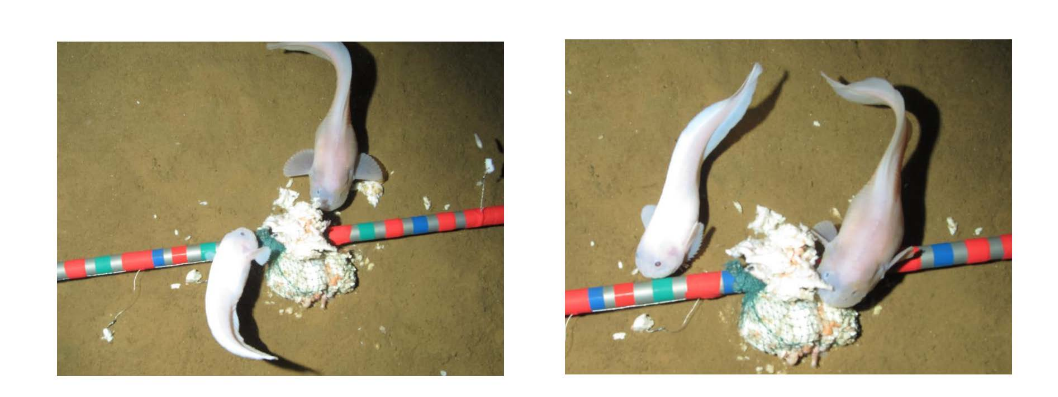Highlights
Study Reveals How Olfactory Evolves in World's Deepest Living Fish
The hadal zone is the deepest region of the ocean, representing the deepest marine habitat on Earth (6000-11000m) and accounting for the deepest 45% of the oceanic depth range. They are among the most hostile environments on Earth for the high hydrostatic pressure, darkness, limited food resources, low temperatures, and hypoxia. Hadal zones also host active and diverse biological communities, of which the ecological adaptations remain largely unknown.
Liparid snailfishes is the most common hadal vertebrate species with habitats ranging from intertidal to depths exceeding 8,100 m. Researchers have found a series of adaptive characteristics on morphology and genome in a Mariana snailfish. A notable is the inflated stomach typically filled with only one dominant crustacean species, which means a shift to meet the food limit environment. The visual degradation and this specific feeding strategy indicated a dietary shift which may involve changes in olfactory perception. Hence, it is interesting to investigate the olfactory evolution in this world’s deepest fish. The results will provide new insights into evolutionary adaptation to the hadal environment.
Researchers from Institute of Hydrobiology (IHB) of Chinese Academy of Sciences addressed the olfactory evolution of the Mariana snailfish. Through comparative analysis of two main olfactory receptor family, olfactory receptor (OR) and trace amine-associated receptor (TAAR) with eight fish species, the evolution dynamic of olfactory receptor gene repertoire in the Mariana snailfish has been revealed for the first time.
Surprisingly, the number of OR gene family in the Mariana snailfish did not increase to compensate the visual degradation, but decrease dramatically with a large proportion of pseudogenes. In contrast, the number of TAAR gene family was comparable with its shallow-sea relative. The massive loss in ORs but not in TAARs suggest decreased dependence on OR gene function, while its reliance on TAAR may still be important. This is consistent with its specific feeding in the simple chemical environment and the ability to fast respond to amines released from biological decay.
Distinct subfamilies of OR and TAAR gene family were found to evolve independently. The OR gene subfamilies showed overall contraction while the number of TAAR gene subfamilies were reduced. Consistent with natural selection as the main force shape the gene family evolution, strongly relaxed selection was detected in OR but slightly enhanced selective strength was observed in TAAR.
"This association between ecological niche and olfactory gene family evolution in the Mariana snailfish sheds new light on the adaptation in the hadal environment” said by Dr. JIANG Haifeng, first author of the study. This study has been published in Genes with the title of " Massive Loss of Olfactory Receptors But Not Trace Amine-Associated Receptors in the World’s Deepest-Living Fish (Pseudoliparis swirei) ".
This work is financially supported by the National Natural Science Foundation of China.

Two Mariana snailfish (Pseudoliparis swirei) feeding on amphipods attracted by the bait.(Image by IHB)
Contact:
Prof.HE Shunping
Research Group of Fish Phylogenetics and Biogeography
Institute of Hydrobiology, Chinese Academy of Sciences
E-mail: clad@ihb.ac.cn